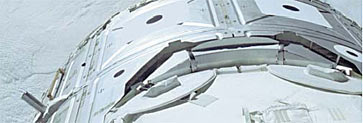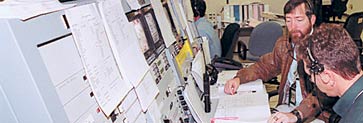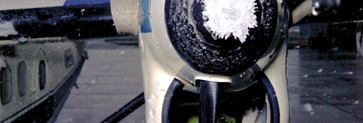By Harvey Schabes
It was early in my career at NASA, and I was a relatively junior engineer. I hadn’t interfaced much with teams from NASA centers other than my own, Lewis, or what is now called the Glenn Research Center. I was part of a team working on the development of the architectural control documents (ACDs) for Space Station, and we had to do quite a bit of work with the Marshall Space Flight Center. There were several contentious issues between the Lewis delegation and the Marshall delegation on how these documents should be developed. There was a lot of “do it my way; no, do it my way.”
At one long and intense meeting, we reached some small agreements that needed to be documented. I was taking the notes and so it fell on me to capture everything that was said. As the meeting ground on, some people from Marshall worried that their points of view wouldn’t be documented accurately. They started to wonder out loud, “Is Harvey going to get it right?”
“Trust me, I will get it right,” I said, and so it became a running joke. Every time the Marshall group worried out loud about being quoted accurately, I had to look them in the eye and say, “Trust me.” Probably the last word anyone said at that meeting was, “Well, I guess we will have to trust Harvey then.”
“Don’t worry, he’ll get it right,” the other people on the Lewis team reassured them. After the meeting I went back to my office to try to pull it all together and to honor the “trust me” promises I had made.
At the next meeting with the same contingent from Marshall, the head of their delegation, the project manager, started things off by saying, “In honor of Harvey’s trustworthiness, we want to present him with this small token of our appreciation.” She stood up and held up an oversized T shirt with “Trust Me” printed on the front. I wore the T shirt for the rest of the day, which got quite a laugh, and I would like to think the Marshall-Lewis relationship took a turn for the better.
I have to give a lot of credit to that project manager for bringing in the T shirt. In the heat of difficult and sometimes painful negotiations, a little bit of comedy can go a long way towards saying, “Let’s see if we can’t remember that we’re all on this project together.” I think, as a result, we did trust each other a little more. It also gave me confidence in my ability to deal with other organizations, and that was something I certainly needed as time went on.
A different time, a different style
A couple of years later, I was again working on Space Station ACDs. I put together a proposal that some people liked and some people didn’t. During a series of meetings, I remember at times feeling as though I was the only one on my side of the table. There was one senior manager who felt that I was sticking my nose in places it didn’t belong. He liked the status quo and made no secret of his distaste for what I was trying to do.
Still a relatively junior engineer at the time, I began to question my own convictions about what I was proposing. Did I have what it takes to see this through to the end? This all came to a head one night when I was checking into a hotel in the Washington, D.C., area for a meeting at NASA Headquarters. Lo and behold the senior manager with whom I had clashed was checking into the same hotel at the same time. I am a person of relatively small stature, i.e. short. This person was easily a foot taller, or at least he seemed to be a foot taller, and easily a hundred pounds heavier. He heard my name at the check-in counter, and he turned to me and, huffing and puffing, or at least that’s my memory of it, put his hand on my shoulder and said, “You’re that guy messing around with the ACDs.”
“Hello,” I said, meekly. “Yes, that’s me.” I think I was expecting him to put his hand on my head and squash me down into the floor. We chatted for a half-minute maybe, and then we each went our separate ways.
A couple of weeks later, we had the meeting where I was going to roll out my plan to a group of senior managers. I worried that this guy was going to be sitting around the table and, since he hadn’t succeeded in crushing me the last time we met, he was going to lose no time in getting to it now.
The night before the meeting I recalled the “Trust Me” T shirt, and how we were able to defuse tensions with a little bit of humor. Next morning, just hours before the meeting, I went out and got a red T shirt with bold black letters on the front that said, “Yeah, I’m the guy messing around with the ACDs.” Before showing my first slide, I held up this T shirt in front of all the senior managers. Everyone laughed and for me it created a comfort zone to get into my presentation and speak with confidence.
Whenever I do public speaking, I always aim to make people smile. I’ve always found it easy to crack jokes and be funny. I never imagined it would pay off so importantly in my professional life.
Lessons
- Smiles and laughter reduce stress. They also renew energy and trust in ourselves and others.
- A characteristic of any good project manager is his or her willingness to challenge the conventional way of doing things. Use whatever tools you have available, including a sense of humor.
Question
Do you have examples of how you learned from experience, especially examples that challenged the status quo?
Read more about using humor at work:
Grins and Giggles: The Launchpad to High Performance
Read more about the Space Station:
Smart Buying









